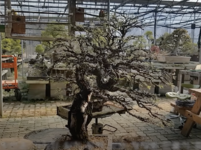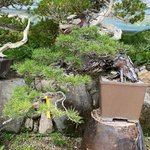Bonsai Noodles
Mame
I've noticed Korean bonsai YouTube channels have pines with trunk bark that's very geometric/rugged. Is this due to a carving technique many Korean bonsai artists practice, or is this unique to their species/cultivars like Pinus Koraiensis? I've noticed their garden trees are especially grown to have bark with this character.






